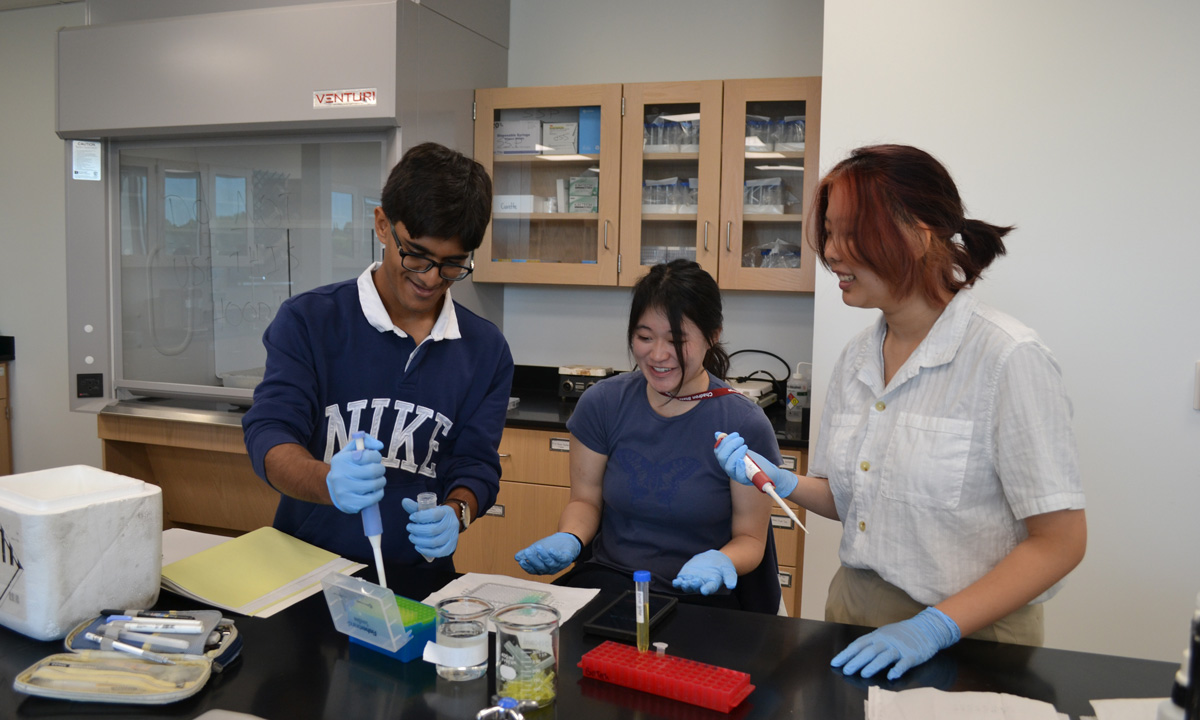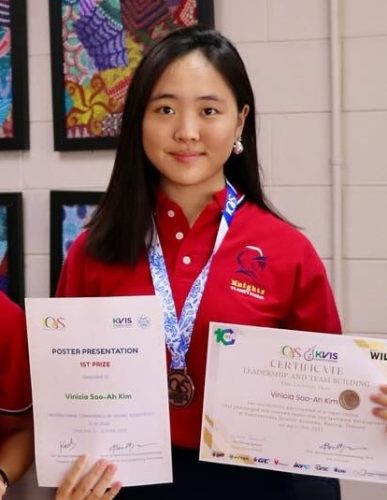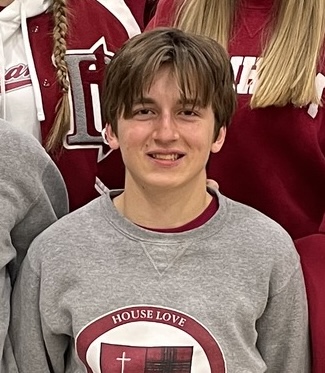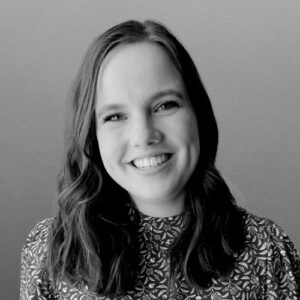5-Week Summer Science Boot Camp Draws Top STEM Teens from Around the Globe
HS students live in college dorms, research real-world problems for 60 hours a week and meet peers who are just as smart as they are — or smarter.

Get stories like this delivered straight to your inbox. Sign up for The 74 Newsletter
Science fairs and competitions were the norm for Vinicia Kim, who grew up in Guam with a deep passion for science, technology, engineering and math. But as she advanced to high school, the U.S. territory island — located roughly 1,500 miles east of the Philippines — soon became too small for Kim’s growing interests.
“Guam doesn’t have a lot of STEM opportunities at all,” Kim said. “Even at the University of Guam, it’s so small that we barely have any basic laboratory [equipment], like what other universities would have.”
When the 17-year-old student learned of a highly competitive U.S. summer science program, she applied. Little did she know that she would not only be accepted, but flown to the small, rural town of Chadron, nestled in the sandhills of western Nebraska.
In June, Kim began the biochemistry program at SSP International, a nonprofit that has offered residential summer STEM research opportunities to teenagers since 1959. She and 35 other rising seniors spent five weeks at Chadron State College, conducting research with professors and graduate students to help prevent fungal infection of agricultural crops.

The college is one of 14 universities across the nation that housed 600 students this summer to tackle research projects in fields like astrophysics and cell biology. Chadron State — a school of roughly 2,000 students — joined the organization’s list of partners this year to expand the biochemistry program, which also takes place at Purdue and Indiana universities.
Rachel Avard, a biology professor at Framingham State University in Massachusetts, worked with SSP International students at Purdue University last year. This summer, she came to Chadron for the same reason: to help aspiring scientists gain key STEM skills, along with personal growth and preparation for college.
“For many of them, this is the first time in their lives that they haven’t been ‘the best’ immediately walking in the door,” she said. “We’re really able to hold their hand through the process of learning how to grow these skills and how to work in a team, how to adjust to failure, how to work through all these challenges.”
The three colleges in SSP International’s biochemistry program are working on the same research project. When the last session ends, students will have designed a molecule that could inhibit enzyme activity and prevent fungal infection of crops. It’s a task that SSP International students have been working on for a few years, Avard said. The organization is collecting participants’ research results that can hopefully be used to help create a drug to protect crops in the future.
“Fungal pathogens are killing sometimes … up to 50% or 60% of crops every year. And we have all these pesticides and fungicides, but they’re all extremely toxic,” she said. “So the goal for this project is to develop a drug that is going to kill fungi.”
The workload includes 60-hour weeks in the college’s science and math wing. Days are filled with in-depth classroom lectures and team discussions before students pull on latex gloves to conduct experiments in the lab.
Everyone gets one-hour breaks for rest or meals, but the students often end up in the lab after sunset or during personal time on weekends. Dinners are always business casual and include professional networking opportunities with guest speakers. Avard and other faculty also take the students on field trips or host games in the evenings to help them work as a team.
The rigor of the summer science program was a surprise for many, including Kim.
“I didn’t know it’d be this intense. The first three days, I would say, were the most intense of my life — like exam season — but it makes me feel productive, and I think that’s what’s really important,” she said. “And good results are going to come out soon. Science is exciting. You don’t know what’s going to happen. So it keeps us on all of our toes and wanting to do our best.”
Researchers have found that high-quality academic preparation and exposure to STEM is a key influence in high schoolers’ chances of landing a STEM career. In a 2023 study, 75% of Gen Z youth said they were interested in STEM occupations but only 29% listed a STEM role as their first career choice.
A 2021 Purdue University study on SSP International’s summer science program found that “engaging in authentic research as a high school student has the ability to promote motivation and retention in STEM.”
“The thought is not just that we are trying to teach science to some students, but we wanted to give students a transformational experience at a pivotal time in their life,” said Amy Belote, the organization’s vice president of program operations. “When they’re leaving the summer science program, they’re getting ready to start their senior year of high school — thinking about their future, what they envision for themselves. We’re giving them some hands-on experience before they start making all of those plans.”
The program accepts only about 15% of applicants, Belote said, and tries to balance the number of males and females in each cohort. In Chadron, the group consists of 18 girls and 18 boys.
The program comes with a hefty price tag: $9,800. Nearly half of participants last year received financial aid, and about a third were able to go for free. Students can also receive spending money and $3,000 stipends to replace wages they would have earned during the summer if they were at home.
Avard said these facets of the program allow students of a variety of backgrounds to experience something that can change their life trajectory. Witnessing each student’s personal growth — secluded on a college campus with a small group of people for five weeks, working long hours — is her favorite part.
“On day one, they’re not making eye contact. They’re very shy. They’re all very unsure,” she said. “They’ve never really been alone or without parental supervision all day, every day. And so the growth that we see in just even the first couple weeks is phenomenal.”

This summer was Aiden Fee’s first time visiting the Midwest. A 16-year-old from Baton Rouge, Louisiana, he said he learned to love the open landscape and friendly people in town. He also became more comfortable with meeting new people in unfamiliar settings.
“I’ve learned a lot more about teamwork and asking questions,” Fee said. “A lot of the students here are some of the highest-achieving at their school. Whenever you have so many people like that, it’s about not being a leader, but relying on other people.”
Kim said she’s looking forward to using the organization’s alumni network, which provides group and one-on-one mentoring for recent participants as they transition from high school to college.
“These [past] weeks will be the most intense and challenging time of my life. But it’s been so eye-opening. I’ve met so many people from different cultures, and I just can’t wait for the future, because we all aspire to be some type of scientist,” she said. “So I can’t wait to see where this program leads us.”
Get stories like these delivered straight to your inbox. Sign up for The 74 Newsletter

;)
